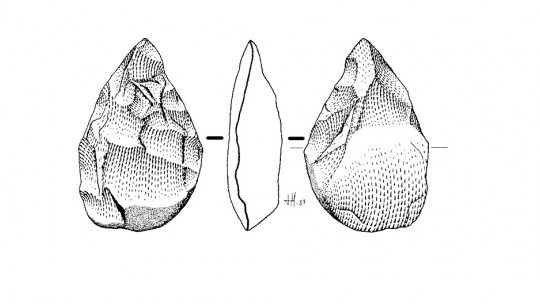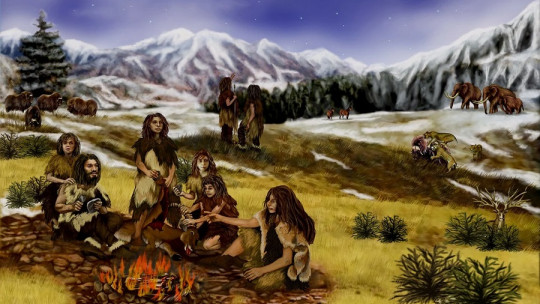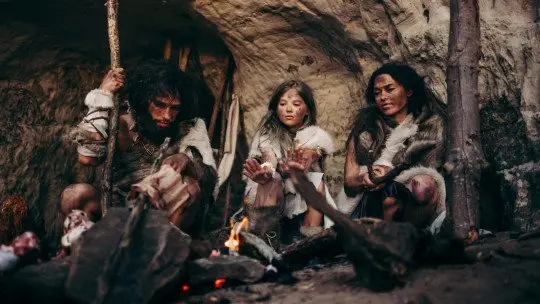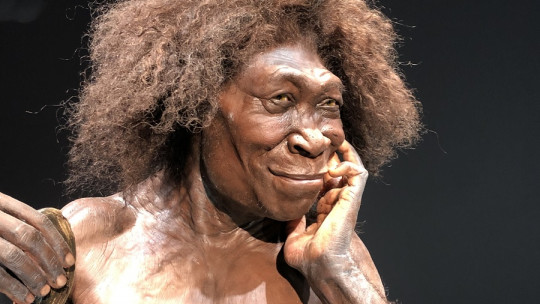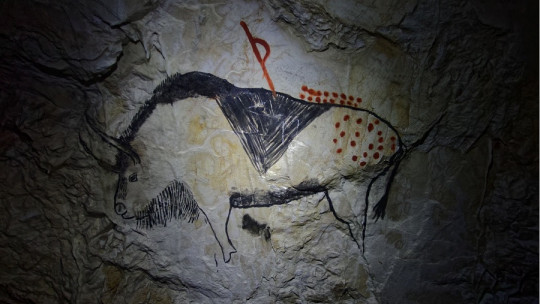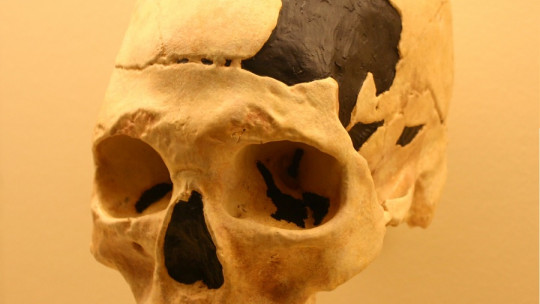Something that has been fundamental for the evolution of human beings is the development of technology, understood as the set of instruments and procedures that help us satisfy our needs and solve problems.
Such development has taken place throughout the history of our species, in fact, our sophisticated technology is part of what differentiates us from all other species. It has not only helped us adapt to the needs that the environment presents to us, but also to adapt that environment to our own needs.
More specifically, the passage from homo habilis to homo sapiens was marked by the use of minerals, which is known as lithic industry This is also the oldest industry developed by the human species.
What is the lithic industry?
The lithic industry is production of tools based on rock and various minerals , which had a special boom in the period known as “prehistory”. Specifically in the Paleolithic, Mesolithic and Neolithic periods.
Some examples of these tools are the weapons that were used for hunting or gathering, and also the materials necessary to make them, among others. It is an industry whose development was quite slow and at the same time important for our evolution: it has been present for more than two million years.
7 types of lithic industry: from Homo habilis to Homo sapiens
As expected, the needs and available resources were constantly modified between the Paleolithic and the Neolithic. Thus, there were different types of lithic industry.
Currently seven main types are recognized: Oldowan, Acheulean, Mousterian, Aurignacian, Gravettian, Solutrean and Magalenian.
1. Oldowan
The Oldowan type industry, also known as mode 1 industry appeared approximately 2.5 million years ago, probably with the emergence of the first representatives of the human race, the Homo.
The production of tools first occurred based on carved rocks, whose shape could be different and was achieved by hitting one or both sides of the rock. On the other hand, these tools had a very low degree of elaboration, since they were only intended to sharpen stones at one end, without paying much care to the resulting shape. When making irregular marks created in a rudimentary way, there was not much control over the shape obtained. For this It is recognized as the oldest stone carving industry
Oldowan stone production was based on taking advantage of the nearest raw material, without having to plan much about where to get it and how to manipulate it. The main objective was to obtain sharp edges and small parts This type of technology was mainly used by Homo habilis.
2. Acheulean
The Acheulean mode, or mode 2, refers to the production and use of flat, thin fragments of stone (what is known as “flake”), which were carved on both sides, obtaining two-sided axes These flakes are more standardized than in the previous period, they follow a specific order of blows and turns in the manipulation of the material being worked with.
The Acheulean-type lithic industry corresponds to the Lower Paleolithic, approximately 1.6 million years ago, and the rock manipulation techniques gave it the shape of small axes. On the other hand, these instruments were not specialized in specific tasks, and They served the general purpose of cutting soft materials and scraping hides at the price of neither obtaining optimal results nor very high productivity compared to what could be achieved with other types of lithic industry that were to come.
3. Mousterian
The mode 3, or Mousterian, lithic industry appeared at the beginning of the Upper Pleistocene, about 125,000 years ago and disappeared about 30,000 years ago. It is associated with Neanderthals , which, starting from the Acheulean industry originating in Africa, perfected it in the regions of Eurasia where they appeared as a differentiated species and with a cranial capacity greater than that of their ancestors. On the other hand, the first representatives of sapiens also started from it when settling in Eurasia.
In this stage, flint or flint was mainly used, a hard stone made from silica that can create sharp edges when broken Likewise, during this period that corresponds to the Middle Paleolithic, stones were used especially for hunting, but specialized tools began to be created, planning a particular purpose in their production. Specifically, around sixty specialized tools have been preserved, such as punches, axes, knives, etc.
The tools were smaller in size than in previous periods and they had more points, so they are closer to the shape of a knife. Within this period, the intermediate “Chatelperronian” stage is also recognized, closer to the Upper Paleolithic.
4. Aurignacian
This period, along with the three that follow, are usually grouped within the same era: the Upper Paleolithic (the stage that goes from 40,000 years ago to 12,000 years ago), and are associated with a common mode of production. characterized by the use of bone, antler or ivory to make long, very sharp points (impossible to manufacture from materials as brittle as stones), and also for making the first artistic representations with the same materials. Thanks to the possibility of creating needles, it is possible to make sophisticated clothing with which to move through completely glacial ecosystems, something that other representatives of the Homo genus could not do for a long time.
On the other hand, in this type of lithic industry the use of the burin becomes widespread which is an instrument developed by Homo sapiens and is considered the first machine tool: an object created to make other work instruments.
Specifically, the Aurignacian is characterized by large sheets, like large carved flakes. Other materials used were flint, quartz and quartzite.
5. Gravettian
Along with the previous period, the Gravettian is associated with Homo sapiens. Likewise, the use of bone and ivory was predominant for the manufacture of long points. It is characterized by the presence of the first decorated bones and also by the development of clay firing methods
6. Solutrean
In continuation with the previous one, this stage is characterized by the development of rock heating methods. By these same methods, the carving and shape of the tool is modified. They have more aesthetic touches, similar to an arrow. Flint, quartz and different crystals are also used, such as obsidian
7. Magdalenian
In this last period, the tools are even finer but also larger, shaped like the tip of an assegai (small throwing spear), although they also have triangular shapes. Their elaborate products were used not only for hunting, but as combat weapons and also as decorations. Many well-preserved remains have been found in the southwest of Western Europe.

